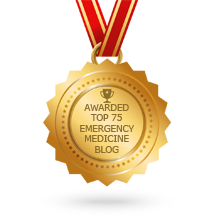OMG, TMI! What does open notes mean for you and your patients?
/This lecture was presented at the 2021 Maine Medical Center Winter Symposium. For more information on the symposium click here.
In April 2021, provisions against “information blocking” in the 21st Century Cures Act will take effect. For the first time, patients will have easy digital access to their chart in real time via their patient portal. This change was largely driven by the “Open Notes” movement.
The “Open Notes” movement started in 2010 with a national initiative funded by the Robert Wood Johnson Foundation (RWJF) to encourage doctors and other clinicians to offer patients electronic access to their notes. Initially the RWJF funded 3 pilot programs in primary care settings. In 2015 this effort expanded as multiple foundations funded a 3-year, $10 million initiative to spread access to notes to 50 million patients nationwide.
Although many primary care providers reported initial misgivings about this initiative, the results were overwhelmingly positive. Here are some of the findings:
77% of patients reported feeling more in control of their care.
Patients reported increased understanding and trust, a better relationship with their doctor, and an increased sense of “patient centeredness.”
Medication adherence improved.
Compliance with preventative services and routine screenings improved.
Patients reported subjective improvement in engagement with care, understanding of care plans, improvement in patient-physician relationship, and improved ability for patient to share informatino with family members (especially for non-English speaking patients) to help them understand their care.
At the end of the pilot project 99% of patients and 100% of docs wanted to continue with open notes.
DRAWBACKS WERE MINIMAL:
1-8% of patients reported that online notes caused confusion or worry, or that they felt offended.
0-21% of PCP’s reported spending more time writing notes and 3-36% changed note content.
Overall providers and offices reported minimal change to workload, phone calls, emails, and office visits (there was concern that the office would be overwhelmed with calls related to patients reading their notes, but this did not happen).
Outside of the primary care setting there is very little data. One small study on inpatients with access to their notes showed that access did not increase provider workload or patient confusion/worry.
In the ED setting the data on open notes is . . . nonexistent!
SOME POTENTIAL STICKY SITUATIONS:
Ways of addressing these may depend on your institution’s approach and guidance.
Pediatric patients: for MaineHealth, notes on kids age 12-17 are available only to the patient via their login, not to the parent.
Patient questions and requests for changes to their note will go through Health Information Management.
PRACTICAL TIPS:
Keep it simple, avoid jargon and abbreviations if possible. There is no expectation that your note should be written for a lay audience, but if it is convenient and appropriate consider using simpler language.
Stick to the facts.
Write what you say and say what you write. Use the note to reinforce what you have discussed with the patient.
Discuss next steps in your note - expect that the patient will refer to the note after discharge to refresh their memory on the visit or may show it to a family member or friend to help them understand better.
Support patient accomplishments in your note.
Watch the “dragonisms”—double check for dictation errors and consider including a sentence acknowledging the use of voice dictation software and the possibility of dictation errors.
For more information on open notes, visit the Open Notes Group
by Clicking Here
Samantha L. Wood, MD
Associate Professor of Emergency Medicine, Maine Medical Center
Edited and Posted by Jeffrey A. Holmes, MD
References
AHRQ. Patient access to medical notes in primary care: improving engagement and safety. [Pdf]
D’Costa SN et al. A systematic review of patient access to medical records in the acute setting: practicalities, perspectives, and ethical consequences. BMC Medical Ethics 2020 21:18.[Pdf]
Esch T et al. Engaging patients through open notes: an evaluation using mixed methods. BMJ Open Access 2016;6:e010034.[Pdf]
Klein et al. Your patient is now reading your note: opportunities, problems, and prospects. Am J Med 2016 129;10: 1018-1021.[Pubmed]
Mold F et al. Patient’s online access to their electronic health records and linked online services: a systemic review in primary care. Br J Gen Practice 2015; DOI: 103399/bjgp15X683941.[Pubmed]










